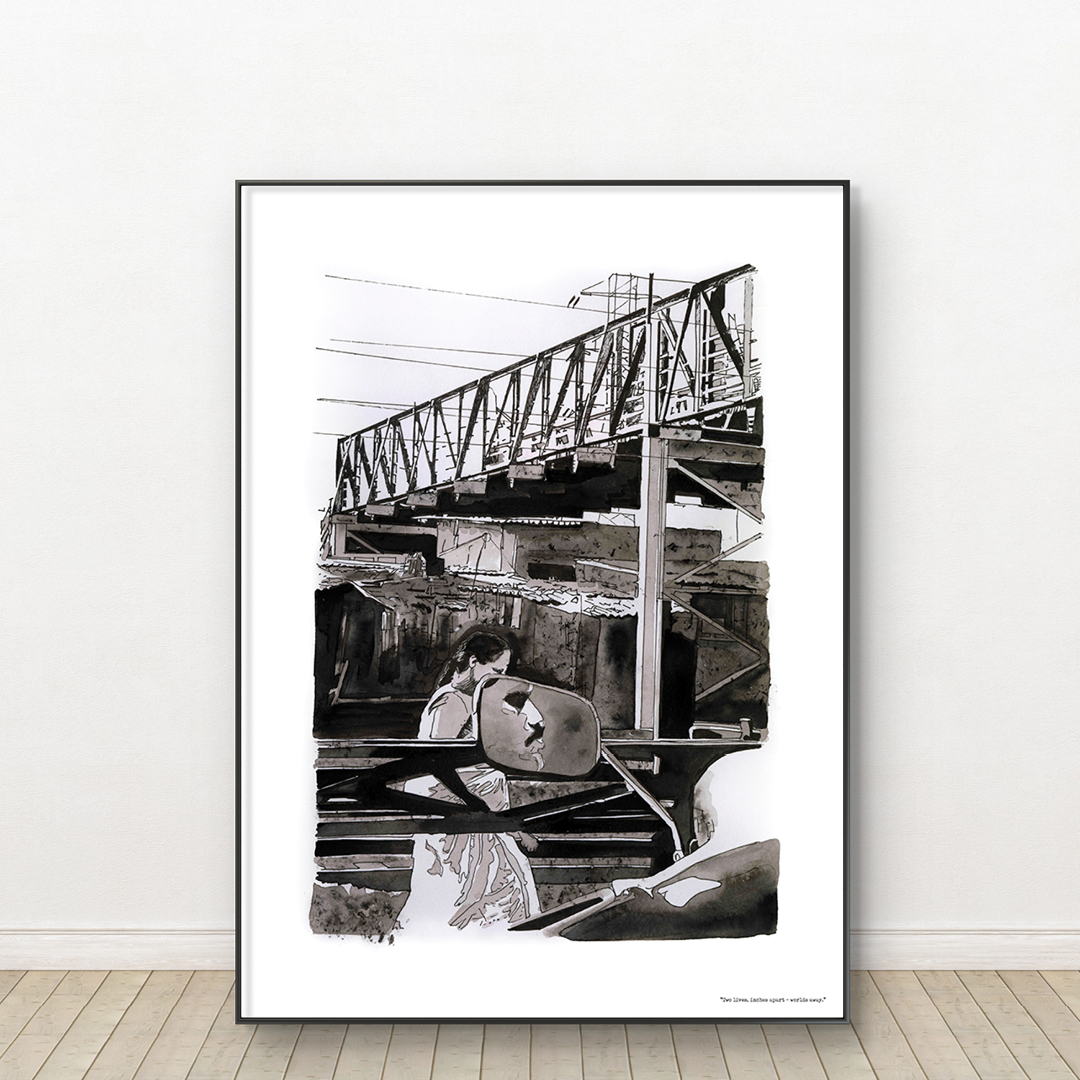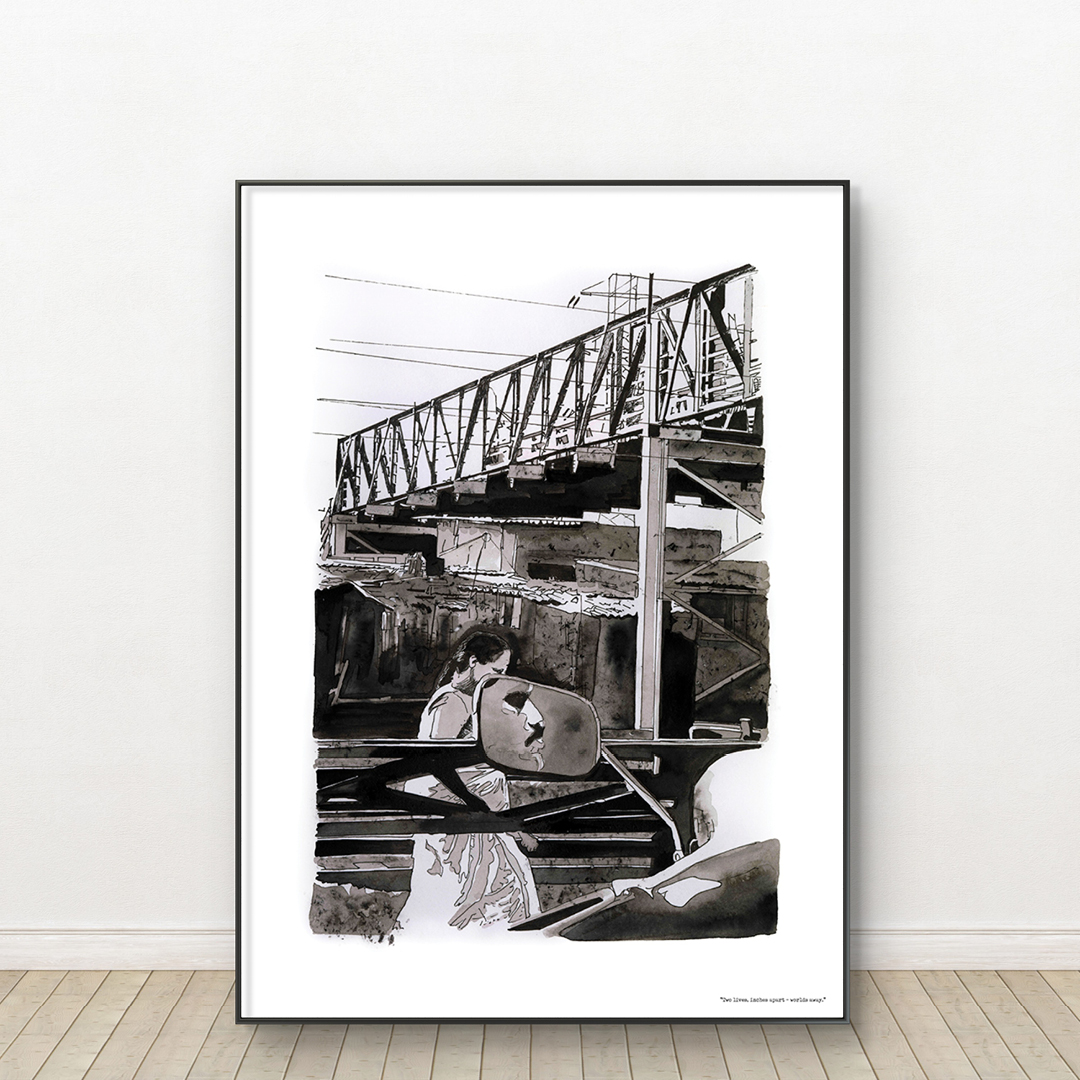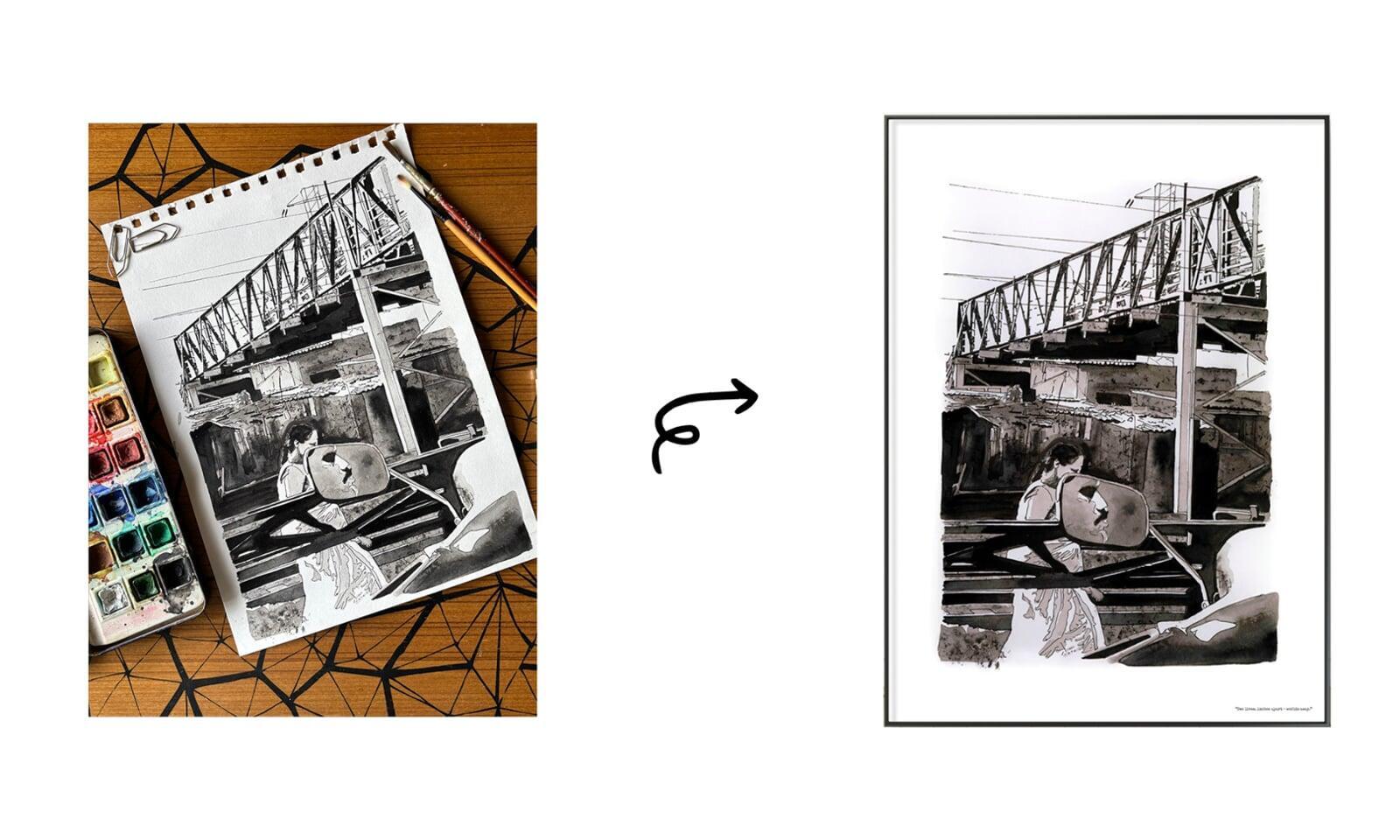



Worlds apart - Art No. 427/2025
Rs.17,400.00 - Rs.29,900.00
"Two lives, inches apart - worlds away."
1. This is fine art reproduction of my original painting.
2. This is limited edition painting.
3. Paper: Archival rag watercolour paper.
4. Frame: High quality frame.
Frame type: Metal / Wood: 0.25" to 1"
5. Mount: Acid-free, mould-free mounts.
2. This is limited edition painting.
3. Paper: Archival rag watercolour paper.
4. Frame: High quality frame.
Frame type: Metal / Wood: 0.25" to 1"
5. Mount: Acid-free, mould-free mounts.
Mount Size: 2" to 3"
Frame
Size
Quotes
Choose Quantity
Product Details
GREYWORKS JOURNAL

Introduction, process & technique
This evocative artwork, rendered in pen and watercolour, captures a moment heavy with social contrast and quiet introspection. The composition centers on a woman in a traditional sari, walking past a side mirror of a car, which reflects the face of a man—likely seated inside the vehicle. Above them looms a stark railway bridge, a symbol of movement and transition, cutting across the space with cold geometry. The background appears as a dense urban environment, possibly an informal settlement, with overlapping textures and shades of grey-brown ink.
Reflection & inspiration behind the work
"Two lives, inches apart – worlds away." This quote poignantly encapsulates the essence of the scene. Though the woman and the man in the reflection are physically close—just separated by a car window and a few inches of space—they represent two vastly different worlds. She walks with purpose, perhaps under the weight of daily survival, while he sits enclosed in the comfort and detachment of a vehicle. The class divide, gendered experiences, or even emotional distances are suggested here through the clever use of reflective juxtaposition. The bridge above further reinforces the idea of separation— suggesting a crossing that is visible, but not always accessible.
Placement of the painting for positive energy
Aesthetic Placement Suggestions:
Urban/Modern Living Spaces
- A minimalist apartment with neutral tones would allow the depth and detail of the work to stand out.
- Position it near a window or a soft spotlight to emphasize its ink contrasts.
- Perfect for an art gallery focused on social commentary, class disparities, or urban life.
- Can be accompanied by narrative text or part of a storytelling series.
Academic or Literary Environments
- A university hallway, library, or writer’s studio where themes of identity, sociology, or urban studies are explored.
Reception or Waiting Areas
- In non-profit offices, cultural centers, or humanitarian spaces—where the artwork invites reflection rather than decoration.
This painting doesn’t just decorate a wall—it initiates conversation, contemplation, and even discomfort, in the best sense. It is a meditation on proximity and distance—how lives touch without intersecting, and how shared space doesn't always mean shared experience.


